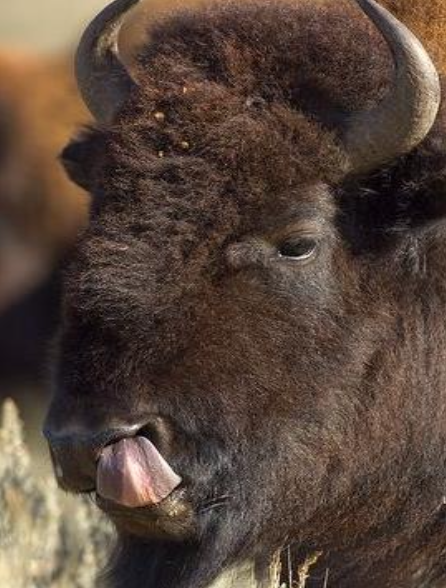Based on a presentation by Amelia Munson
When paddling through Grand Canyon, one finds oneself contemplating the dynamics of the Colorado River – for by what other force has such a monumental fissure in the earth been carved? But if one peers above the banks of the river, it might be surprising what vertebrate life one might find. Here, I’ll briefly touch on the ecology and management of a few charismatic examples of terrestrial vertebrates that make their home around the Colorado River in the Grand Canyon National Park: the ass (aka burro; Equus africanus asinus), the Plains Bison (Bison bison bison), and the California Condor (Gymnogyps californianus).
The Ass
Donkeys (aka burros) first found their way to the Grand Canyon in the 1800s as pack animals for miners of copper, asbestos, and lead. They were used as such for decades until, as mining operations in the Grand Canyon began to slow, they were no longer needed and were set free. Today, there are thousands (ca. 7,000) of wild burros that roam through Arizona, Nevada, and California. But while these floppy-eared equids are endearing to the casual tourist, they have severe ecological impacts. Their hooves constantly trample native vegetation, leading to local eradication of shrubs and grasses that native herbivores rely on for feed. They are also a nuisance for campers in the region, as they raid camps and eat nearly anything (including the toilet paper!). The severity of the negative impacts of the burro have lead the National Park Service to use a variety of lethal and non-lethal management techniques, from chasing burros with helicopters to shooting them when sighted. While the number of burros has greatly decreased since their peak abundances in the 1970s and 80s, burros remain an invasive species of interest in the Grand Canyon National Park.


The Plains Bison
In 2016, it was determined that the Plains Bison is native to the Grand Canyon region, though the current herd is descended from animals imported to the region by a rancher in 1906 in an effort to crossbreed bison with cattle. The efforts of that rancher failed, and the herd was transferred to the state for management. Since then, the bison has survived in healthy numbers along the North Rim of the Canyon. Recently, however, the number of bison has increased to the point that they are beginning to have negative impacts on the ecosystem much in the same way that the burro is having effects: bison trample native vegetation and push out other herbivores. While the exact management strategies that attempt to remedy this situation have yet to be determined, the National Park Service has proposed culling the herd from its current 600 bison to 80-200 bison.
The California Condor
The California Condor is one of the rarest birds in the world, with only a few breeding flocks scattered between Arizona, California, and Baja. Despite their current ‘Endangered’ designation, however, these condors have an incredible recovery story: in 1985, there were only 22 birds left, whereas now, there are nearly 400. In the Grand Canyon, in particular, condors were locally extinct until 1996, when six juvenile captive birds were released. Since then, condors have been successfully breeding in the wild in Grand Canyon National Park. In fact, the cliffs of the Grand Canyon serve as prime nesting habitat for these birds. While these birds are still faced with challenges, such as lead poisoning leading to chick mortality, there is still a robust and largely successful conservation effort taking place to ensure a healthy population of condors along the Colorado River for years to come.

So, while rafting down the Colorado, be sure to look up and around. You just might get a glimpse of one of the rarest birds on the planet, or perhaps spot a the great American bison or a burro!
